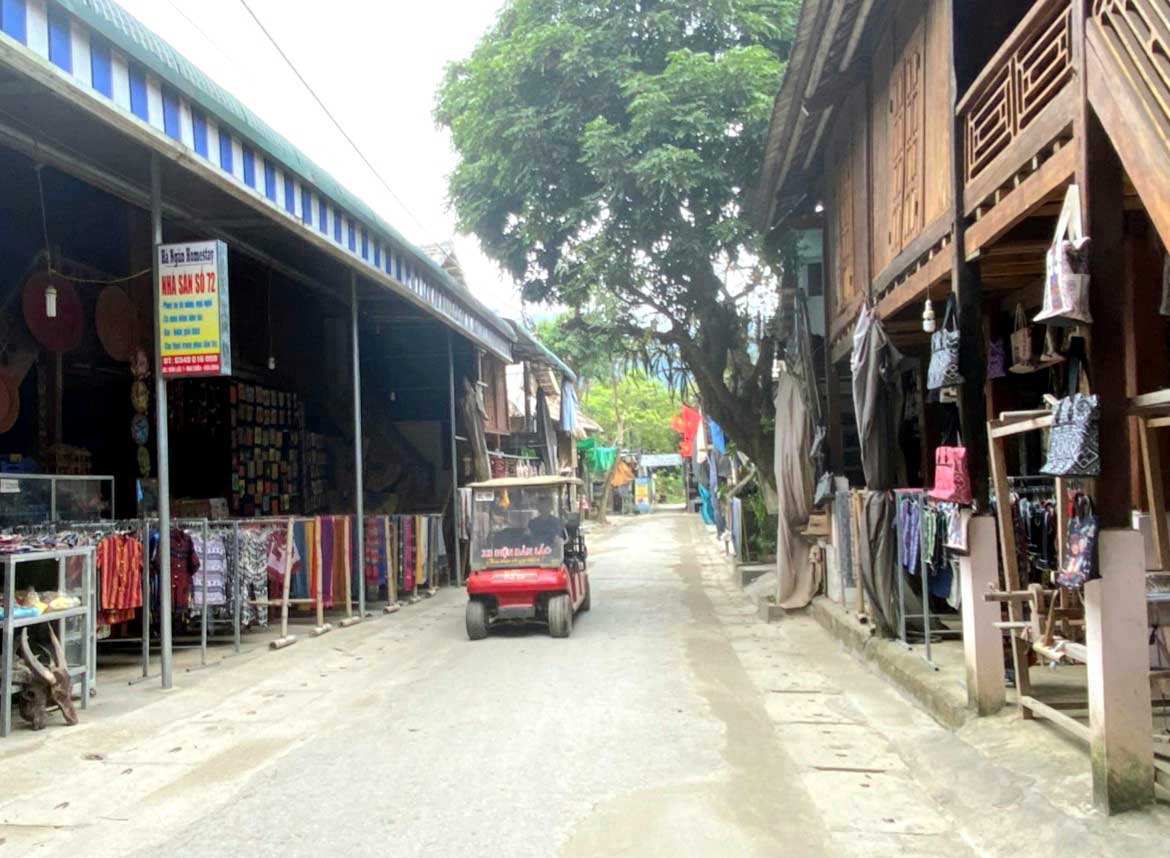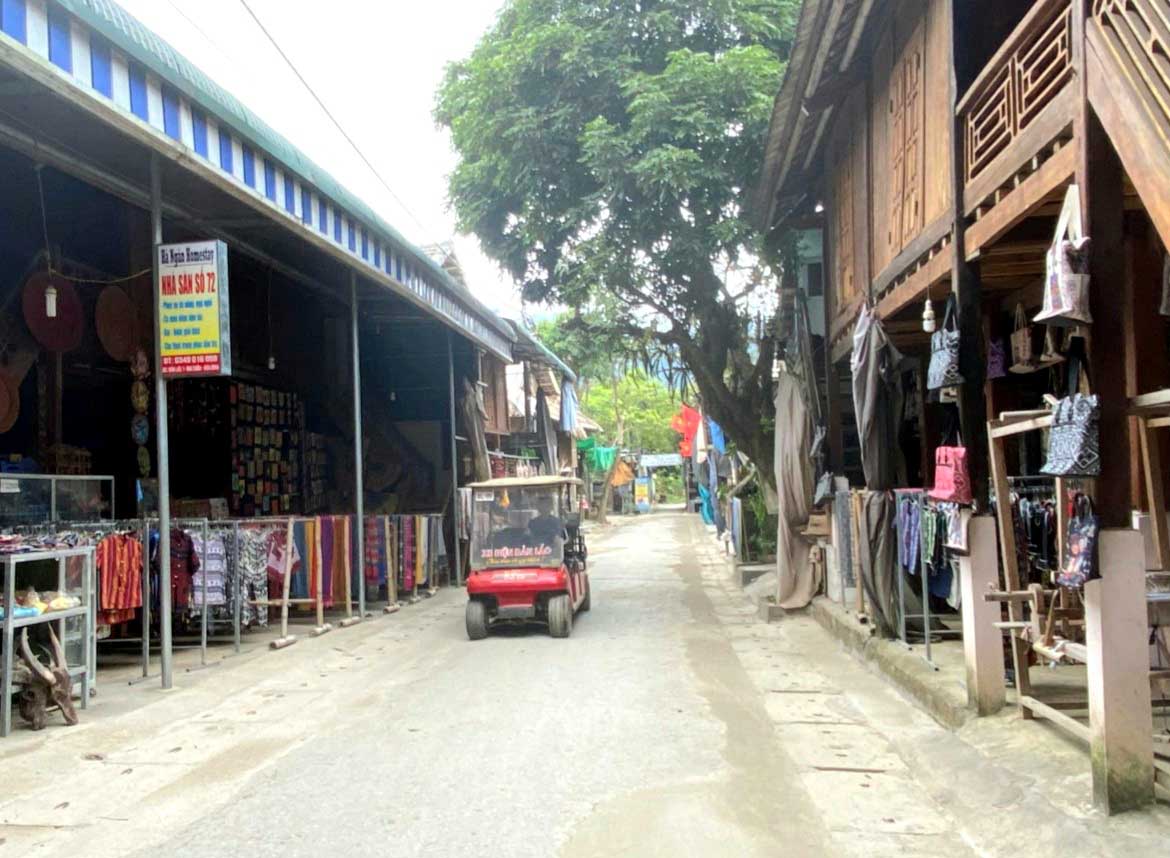
(HBO) – Thanks to its charming beauty, Lac hamlet has been dubbed as a "fairy” in the poetic valley of Mai Chau. The programme on new-style rural area building has given a facelift to the hamlet, making it more attractive to visitors.
 Lac
hamlet in Chieng Chau commune (Mai Chau) has been given a facelift.
Lac
hamlet in Chieng Chau commune (Mai Chau) has been given a facelift.
Lac hamlet in Chieng Chau commune, Mai Chau
district, has become a famous community tourism destination. Over the past
years, it has been given a facelift through the national target programme on
new-style rural area building.
"Such changes are attributable to the State’s
investment as well as the determination, consensus and support of local
residents in the new-style rural area building,” said Ha Cong Hong, head of the
hamlet.
At the beginning of the programme, the hamlet had
met only seven out of the 11 criteria.
Aware of the significance of new-style rural area
building, hamlet leading officials have stepped up the communications work,
thus raising the consensus among the villagers.
Local residents have contributed land to expanding
roads and constructing the sewerage system, and upgraded walls around their
houses and gates.
The villagers are delighted at the changes brought
about by the programme over the past two years.
Ha Cong Quyet, a local, said the road to the hamlet
was once small and the sewerage system had not operated well, adding the
upgraded infrastructure has helped the locality better tourism services.
"I have visited Lac hamlet for many times. The
hamlet has a beautiful landscape with traditional stilt houses of the Thai
ethnic minority group,” said Thanh, a tourist from Hanoi. "When I returned to
the hamlet, it has been given a facelift. This is a beautiful, attractive
place.”
According to Hong, in 2019, Lac hamlet’s per capita
income stood at 32 million VND, 1.76 times higher than that in 2015. To raise
the figure, the hamlet has focused on accommodation and catering services,
among others. Therefore, the hamlet’s per capita income increased to 54 million
VND. The hamlet has fulfilled 10 out of the 11 criteria set for a new-style
rural area./.
Located just a 20-minute drive from Hoa Binh City, Ora Hill Farmstay & Glamping Hoa Binh is a captivating new destination nestled in Mo hamlet, Bình Thanh commune, Cao Phong district. Combining farming with leisure, this tranquil retreat is perfect for those seeking balance, joy, and an immersive experience in the expansive beauty of nature.
Muong Bi - Tan Lac is renowned as one of the four famous Muong regions in Hoa Binh province. Blessed by nature with a favourable climate and stunning landscapes, Tan Lac holds great advantages for tourism development. The local tourism industry has made remarkable strides in recent times thanks to the attention and support from the local authorities and sectors.
With its strategic location, well-developed transport network, and diverse soil and climatic conditions, Hoa Binh is emerging as a must-visit destination in Vietnam's northwestern tourism corridor. The province boasts numerous attractions, including the Kim Boi hot springs (Kim Boi district), the Dau Rong cave complex (Cao Phong), the Mai Chau valley (Mai Chau), and the iconic Hoa Binh hydropower plant.
The northern mountainous province of Hoa Binh has been listed among the 71 most beautiful places to visit worldwide by the prestigious US travel magazine Condé Nast Traveller.
Hoa Binh province’s rich natural and cultural resources position it as a prime location for developing community-based tourism (CBT). In recent years, support from central and provincial policies, as well as assistance from non-governmental organisations, have encouraged local ethnic minority and mountainous communities to actively engage in the sector.



 Lac
hamlet in Chieng Chau commune (Mai Chau) has been given a facelift.
Lac
hamlet in Chieng Chau commune (Mai Chau) has been given a facelift.